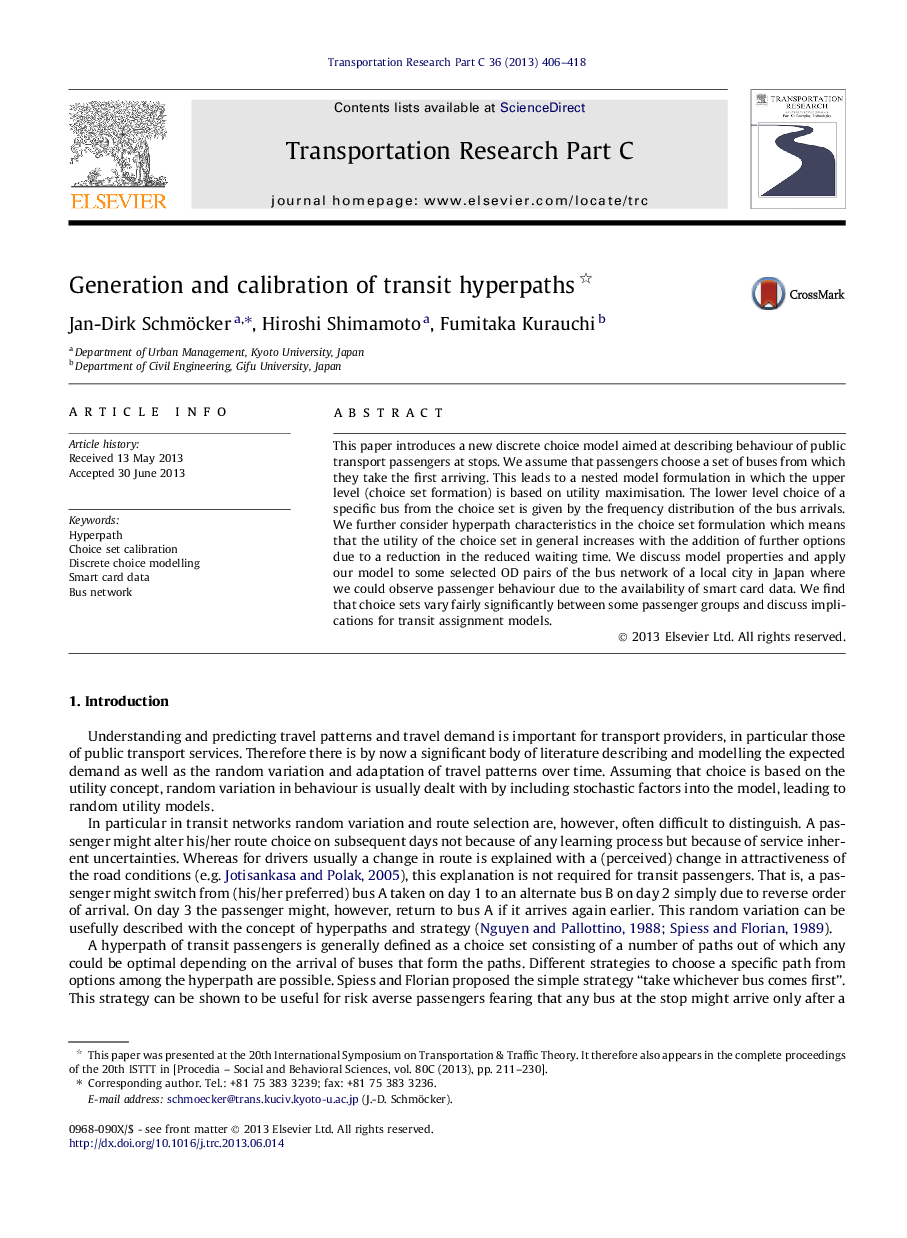| Article ID | Journal | Published Year | Pages | File Type |
|---|---|---|---|---|
| 6937306 | Transportation Research Part C: Emerging Technologies | 2013 | 13 Pages |
Abstract
This paper introduces a new discrete choice model aimed at describing behaviour of public transport passengers at stops. We assume that passengers choose a set of buses from which they take the first arriving. This leads to a nested model formulation in which the upper level (choice set formation) is based on utility maximisation. The lower level choice of a specific bus from the choice set is given by the frequency distribution of the bus arrivals. We further consider hyperpath characteristics in the choice set formulation which means that the utility of the choice set in general increases with the addition of further options due to a reduction in the reduced waiting time. We discuss model properties and apply our model to some selected OD pairs of the bus network of a local city in Japan where we could observe passenger behaviour due to the availability of smart card data. We find that choice sets vary fairly significantly between some passenger groups and discuss implications for transit assignment models.
Related Topics
Physical Sciences and Engineering
Computer Science
Computer Science Applications
Authors
Jan-Dirk Schmöcker, Hiroshi Shimamoto, Fumitaka Kurauchi,
